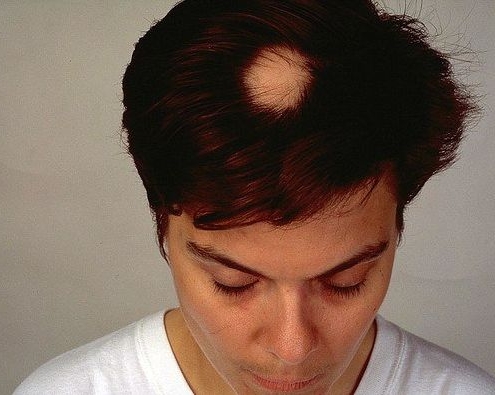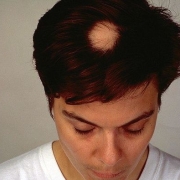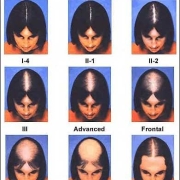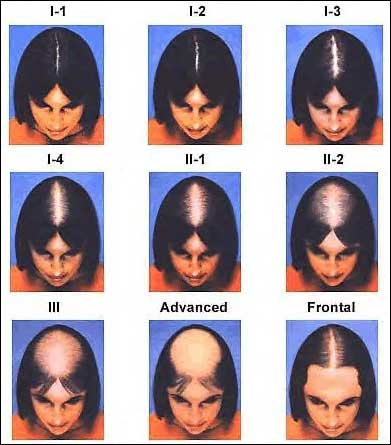Coping with Alopecia Areata: Spot Baldness
 Alopecia Areata is frequently referred to as “spot baldness”, a term that reflects its unique pattern of onset. Where Male Pattern Baldness primarily affects the hairline and crown, and Female hair loss and thinning hair primarily affects the part area, Alopecia Areata is characterized by sudden and somewhat random hair loss in varying and irregular patches on the scalp. The onset of the condition, which is seen in both males and females, often begins sometime between late childhood and early adulthood, though it is not abnormal for Alopecia Areata to exist in very young children or start later in life. Nearly 6.5 million people in the United States alone live with Alopecia Areata; that is 2% of the population!
Alopecia Areata is frequently referred to as “spot baldness”, a term that reflects its unique pattern of onset. Where Male Pattern Baldness primarily affects the hairline and crown, and Female hair loss and thinning hair primarily affects the part area, Alopecia Areata is characterized by sudden and somewhat random hair loss in varying and irregular patches on the scalp. The onset of the condition, which is seen in both males and females, often begins sometime between late childhood and early adulthood, though it is not abnormal for Alopecia Areata to exist in very young children or start later in life. Nearly 6.5 million people in the United States alone live with Alopecia Areata; that is 2% of the population!
The condition itself can be confusing though. Earlier this year, we discussed the many faces of alopecia, noting that the umbrella of alopecias includes a number of different types of hair loss. Alopecia Areata is unique in that this specific term refers to hair loss caused by an autoimmune disorder and as mentioned above, causes distinct patches or spots of baldness. In an autoimmune disorder, an individual’s immune system confuses some of its healthy body tissues for unhealthy and unwanted outside materials such as bacteria, viruses, or toxins. It then tries to protect the body by ridding it of what it understands to be intruders by attacking them. Unfortunately, in this scenario, the tissues being attacked are actually healthy hair follicles.
Research continues on autoimmune susceptibility as well as why an immune system suddenly views healthy tissues as external intruders, and while records are growing to aid in the understanding of the genetic underpinnings of Alopecia Areata and hopeful progress is being made towards prescription drug applications, definitive answers to the many questions surrounding the condition’s origins and potential cure do not yet exist.
What is known is that the majority of people living with Alopecia Areata are completely healthy aside from their autoimmune hair loss. For some individuals, hair loss and regrowth on certain spots of their head will be a continuous cycle throughout their life. For others, what began as specific spots of baldness may develop into broader hair loss and more rare forms of Alopecia Areata. When all hair on the scalp is lost, the condition is then called Alopecia Totalis. If the hair loss encompasses the entire body, including follicles in the eyebrows and pubic hair, the condition is known as Alopecia Universalis, the rarest form of Alopecia Areata.
Treatment options vary in the same way that prognoses do. Stimulation and maintenance of hair growth is possible through ongoing treatments for some individuals while external replacement systems are more effective for others. The degree of hair loss, pattern of hair loss, age of patient, and needs and desires of the patient all play a role in defining which options might suit a specific individual.
To best understand the possibilities available, a one-on-one consultation with a professional hair restoration specialist is the best place to start.





